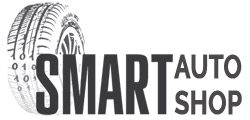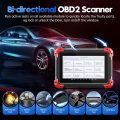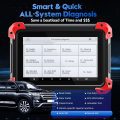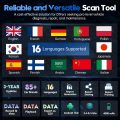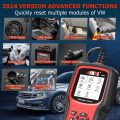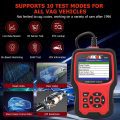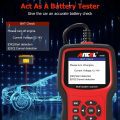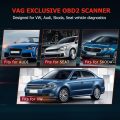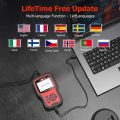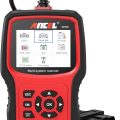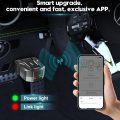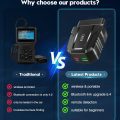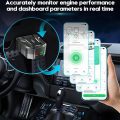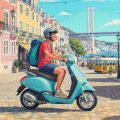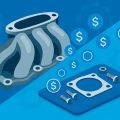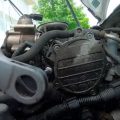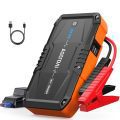Is your car making a strange noise, or perhaps a dashboard light has appeared? Diagnosing a car doesn’t have to be complicated. This guide cuts through the confusion to help you pinpoint problems quickly and get you back on the road safely.
Key Takeaways
- Dashboard warning lights are vital indicators of vehicle health, with specific lights for engine issues, tire pressure, fluid levels, and door/trunk status that should not be ignored to prevent serious damage and safety hazards.
- Regular visual inspections of tires, fluid leaks, and belts and hoses help identify wear and potential issues early. Tire condition, fluid type and color, and belt and hose integrity are key aspects to check for vehicle safety and performance.
- Understanding and using diagnostic tools is crucial for identifying specific vehicle problems. On-board Diagnostics (OBD) readers help retrieve trouble codes, while professional help may be necessary for complex issues that require specialized equipment and expertise.
Understanding Dashboard Warning Lights
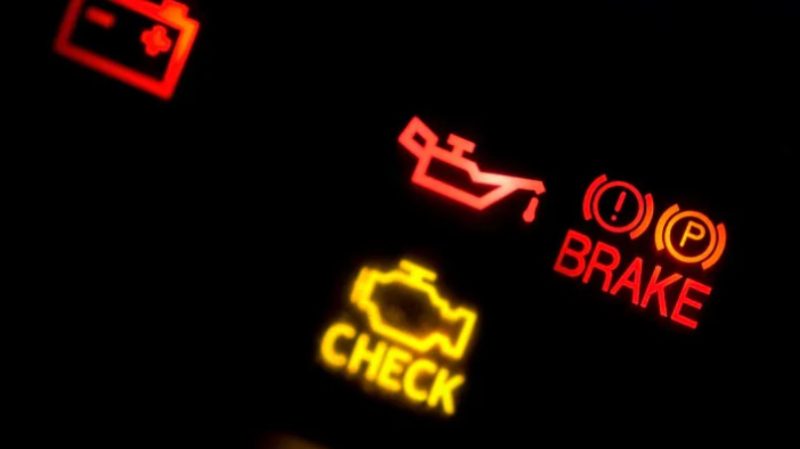
Ever wondered what those mysterious symbols lighting up on your dashboard mean? They are your car’s way of communicating potential issues or malfunctions. Ignoring them can lead to more severe, costly issues, and even pose safety risks.
For instance, the ‘Check Engine’ light indicates that your car’s computer has detected a problem with the engine or transmission and stored a trouble code. Common dashboard warning lights include:
- The washer fluid indicator, representing low windshield washer fluid
- The door open indicator, representing an open door or trunk
- The low fuel indicator, representing the need to refuel
The Tire Pressure Monitoring System (TPMS) light warns of under or overinflated tires, which can be dangerous. It’s important to be aware if a tire pressure light stays on after starting the vehicle or if one fails to illuminate at all, as this could indicate a problem.
Performing a Visual Inspection while Diagnosing a Car
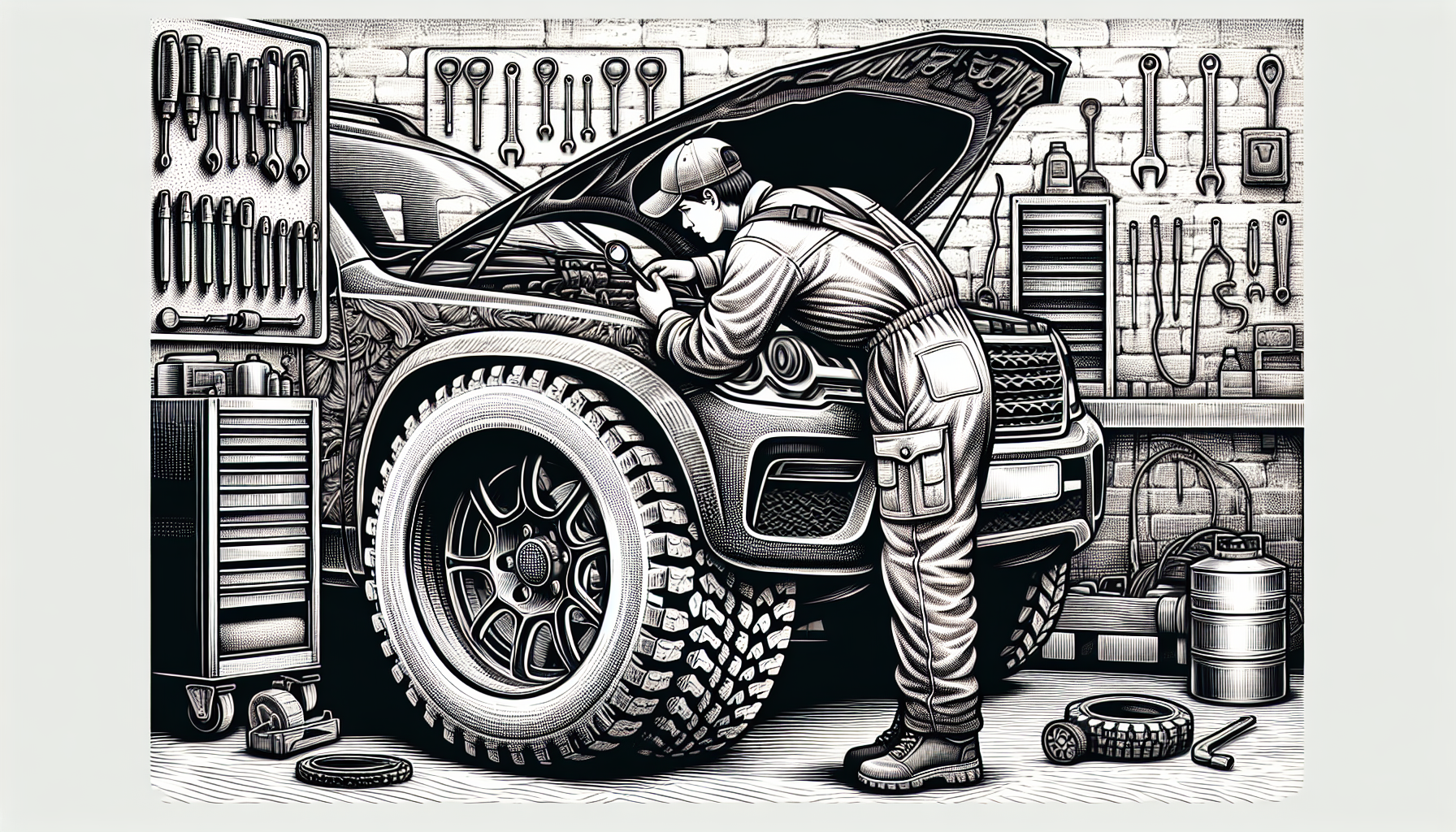
Visual inspection is a simple yet effective way to spot potential issues early. By taking a few seconds to perform a few sight checks, you can ensure that important car components are functioning properly.
Let’s delve deeper into this process, starting with tire inspections.
Checking Tires
Tires are the only contact patch between your car and the road, so their condition is vital for safety and performance. One way to assess tire wear is the penny test: insert a penny upside down in the tire tread, and if you can see the top of Lincoln’s head, the tire’s tread is too worn and may need to be replaced.
Also, inspect the tires for any visible signs of damage such as:
- cuts
- scrapes
- punctures
- bulges
- bumps
- cracks on the tread and sidewalls
Damaged tires need to be examined by a professional for safety. Don’t forget to check tire pressure using a tire gauge when the tires are cold and inflate them to the vehicle’s recommended pressure as necessary.
Identifying Fluid Leaks
Fluid leaks are like a silent alarm signaling potential problems. They should be considered urgent and fixed as soon as possible to ensure the car’s reliability and performance. To identify the type of fluid leaking from a car, observe the liquid’s color:
- Brown or black typically signifies an oil leak
- Light or dark brown suggests a brake fluid leak
- Clear fluid is usually condensation from air conditioning or precipitation and is generally not concerning.
Next time you back out of a parking space, check for any drips or puddles that could indicate a fluid leak. A leaking brake fluid, in particular, poses a severe safety risk by potentially causing a loss of hydraulic pressure and the inability to stop the vehicle.
Inspecting Belts and Hoses
Belts and hoses are like the unsung heroes of your car’s engine, often overlooked but critical for its performance. Regular inspections of these components help prevent failures that could compromise the electrical charging system, cause engine overheating, or result in a loss of power steering.
During belt inspections, examine them for splits, fraying, cracks, and glazing, while also checking the underside of serpentine belts for cracks, separate layers, or groove damage.
On the other hand, hoses should be checked for overall flexibility and specific wear signs like soft areas near the clamps, accomplished by squeezing them to assess their condition, as fluid absorbs moisture which can affect their performance.
Listening for Unusual Sounds
Unusual sounds can be an early warning sign of car problems. A rapid tick or prolonged high-pitched squeal under the hood generally signifies an issue with a belt, while a clunking or creaking sound may be a sign of worn-out suspension components.
Brakes emitting unusual squealing or squeaking noises may be due to foreign objects in the brakes or wear indicators on brake pads signaling the need for replacement. Grinding noises upon braking denote that brake pads may be worn down to metal contact points and require prompt service.
Hissing sounds during acceleration could point to a damaged cooling system, possibly due to deteriorated hoses that have resulted in fluid leaks or even a blown head gasket.
Pay Attention to Vehicle Vibrations and Shaking
Feeling your vehicle shake or vibrate can be unsettling. Common causes of vehicle vibrations include:
- Unbalanced or misaligned wheels
- Uneven tire wear
- Tire damage
- Structural impacts that cause wheel components to bend
These issues can lead to shaking that is particularly noticeable at certain speeds.
Faulty suspension elements like worn tie rods also contribute to car vibrations, which is a separate issue from balance or alignment of wheels and tires. Regular inspections and maintenance are crucial for preventing vibrations, including ensuring proper tire pressure and performing wheel alignments.
Diagnosing a Car Brake Problems

Brake problems can be a serious safety risk. Spongy brakes, for instance, can result from air in the brake system, commonly caused by overheated calipers, fluid boiling, brake lines corrosion, or rust, and old brake hoses that allow air but not fluid to leak. To resolve such issues, a brake fluid flush is recommended, removing any air and contaminants from the lines.
A high-pitched squeal when pressing the brakes is usually a sign of worn brake pads that need replacement. Also, defective brake calipers or rotors can cause vibrations felt through the brake pedal or steering wheel, indicating the need for inspection and repair.
Troubleshooting Engine Issues
Engine issues can be daunting, but understanding common problems can help you diagnose them. For instance, engine overheating can damage the engine significantly and may be indicated by an engine temperature light resembling a thermometer submerged in liquid. Coolant leaks may present as yellow, green, pink, or blue fluids with a sweet smell and slimy feel, leading to engine overheating. A service engine check can help you identify and address these issues before they cause further damage.
Poor acceleration in a vehicle can be due to:
- A bad timing belt
- Dirty fuel filter
- Electronic errors such as fuel injectors or throttle position sensor faults
- A malfunctioning oxygen sensor
- Issues with the air flow meter
These issues can cause the air-to-fuel ratio to be off, resulting in reduced engine power and acceleration, often due to dirty air filters.
Transmission and Steering Issues
Transmission and steering issues can significantly affect your vehicle’s performance. For example, pink or red fluid beneath the vehicle typically indicates a transmission fluid leak that can lead to significant transmission damage if not addressed. Whining noises during acceleration can signal transmission issues like worn gears or low fluid levels, often due to a leak. To avoid steering problems, it’s essential to check and maintain the power steering fluid as well as the steering fluid.
On the other hand, a whining noise when turning the steering wheel can indicate a problem with the power steering system, potentially involving a loose or damaged steering belt. Vibrations during turns may point to power steering issues and should prompt an inspection for any potential fluid leaks.
Utilizing Diagnostic Tools and Scanners

Diagnostic tools and scanners, like On-board Diagnostics (OBD) readers, are handy for assessing and retrieving diagnostic trouble codes from a vehicle’s onboard computer system. An OBD2 scanner interfaces with the vehicle’s OBDII port to:
- Read codes
- Erase codes
- Monitor different live data points
- Gather pre-set emissions test data.
While over-the-counter diagnostic tools provide a range of diagnostics, professional auto repair shops have more sophisticated equipment that provides precise readings of fault codes. Vehicle owners can utilize OBD2 scanners to quickly determine problem areas, prepare for emissions testing, and perform simple repairs like changing an indicated faulty oxygen sensor. A car diagnostic test at a professional auto repair shop can ensure accurate results and proper repairs.
Top 3 Automotive Diagnostic Tools of 2024: A Detailed Review and Comparison
Automotive enthusiasts and professionals alike understand the importance of having a reliable diagnostic tool in their arsenal. Whether it’s for routine maintenance, troubleshooting, or enhancing vehicle performance, the right tool can save both time and money. Thus, we’ve selected three exceptional automotive scanners from this year’s market, each boasting impressive functionality and user acclaim. These scanners are the XTOOL D7, ANCEL VD700, and the OBD2 Scanner Reader Bluetooth by UMEIJA. Each has been chosen based on their high ratings, advanced features, and popularity among users.
The products in this review cater to different needs and budgets, with prices ranging from as low as $29.99 to up to $419. Whether it’s the budget-friendly yet robust OBD2 Bluetooth adapter or the more premium and comprehensive XTOOL D7, each device provides a unique set of functions suited to various diagnostic needs. These tools are capable of handling everything from ECU Coding and Bidirectional Controls, to simple check engine light diagnostics and battery health checks.
This curated selection was put together with the care of potential buyers in mind, ensuring that, regardless of your expertise level, you’ll find a tool that fits your requirements. This isn’t just a random assortment of gadgets; it is a meticulously chosen list aimed at offering practical solutions for modern car owners. Dive into the detailed comparison and analysis of these leading products to discover which scanner is the ideal addition to your automotive toolkit. For more insights and a side-by-side feature examination, follow this detailed product comparison link.
XTOOL D7 Bidirectional Scan Tool 2024: ECU Coding, Active Tests, All System, Android 10, 3-Year Updates
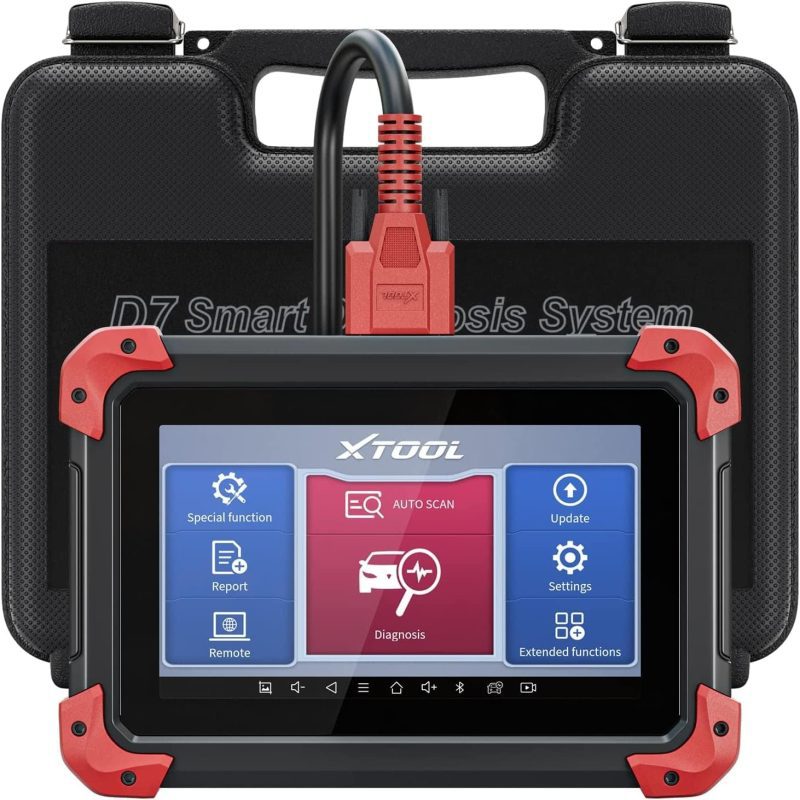
- Offers full bidirectional capabilities enabling effective interactive communication with in-cars systems
- Includes ECU Coding to enhance performance by updating car system software
- Users praised the customer service, finding it very helpful and responsive
- Highlighted for its extensive features for the price, making it an excellent choice for different vehicles and tasks
- Effective in solving complex car issues, with functionalities like the crankshaft relearn
- Requires regular updates to maintain compatibility with new vehicle models and systems
- Limited support for older car models like OBD1/ALDL, leading to compatibility issues
- Some users reported hardware issues, specifically with battery performance
- Could not perform certain specific functions, which led to dissatisfaction among some users (e.g., ABS bleed on certain vehicle models)
ANCEL OBD2 Scanner VD700 Full System Diagnostic Tool for VW Audi, EPB Reset, Battery Registration
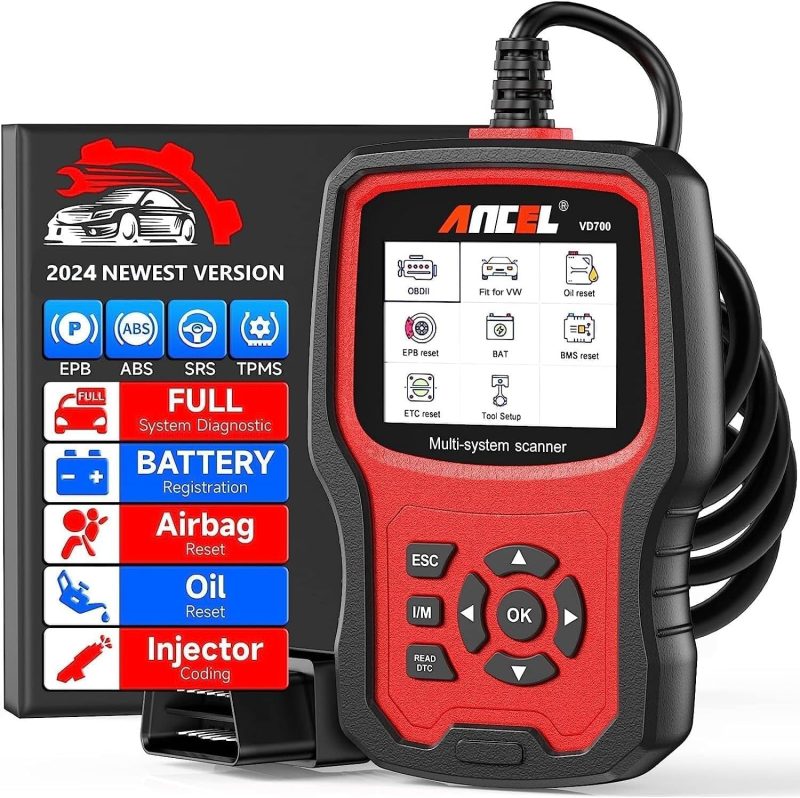
- Designed specifically for Volkswagen, Audi, Skoda, and Seat, making it highly compatible and efficient for these models
- Provides capabilities such as battery registration, electronic parking brake reset, airbag light reset, and clearing of ‘Service Due’ signals
- Described by numerous users as effective in diagnosing problems accurately, saving money on potential dealer services, and clearing dashboard messages
- Lacks support for Mac OS which prevents updates, limiting its usefulness for Mac users
- Does not store diagnostic reports so the device must be constantly plugged in to view data
- Criticized for not being as comprehensive or capable in deep diagnostic functions compared to other tools like the VCDS
OBD2 Scanner Reader Bluetooth 5.4, Wireless Diagnostic Tool for iOS & Android, Engine Code Reader with Live Data Reset
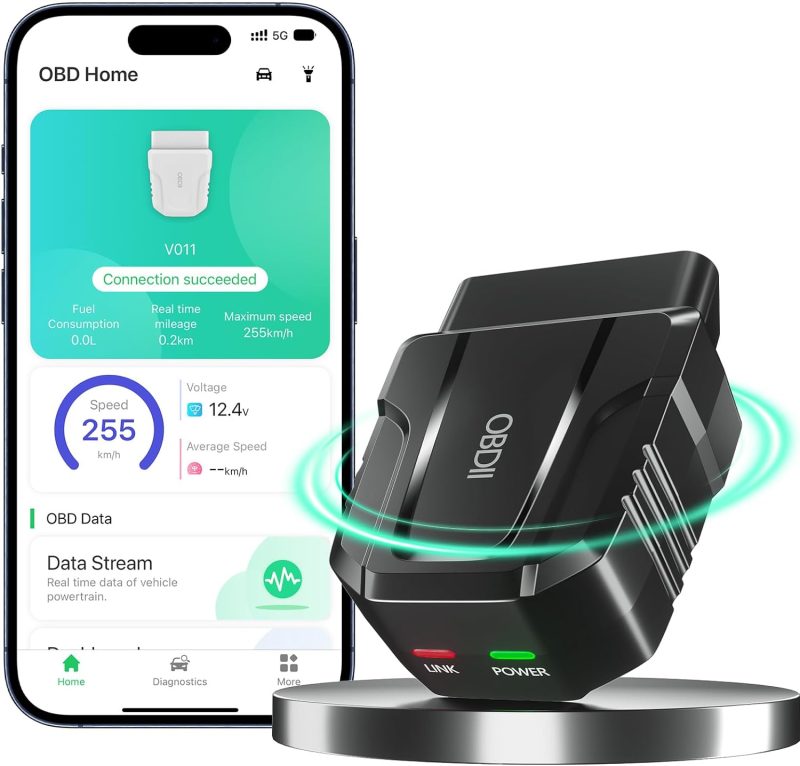
- Compatible with both iOS and Android platforms, increasing its versatility.
- Features Bluetooth 5.4 for stable and fast connection.
- Equipped with diagnostic functions like performance tests, live data streaming, and error code clearance.
- Users find the OBD2 Scanner easy to use, capable of diagnosing and fixing cars independently, and highly effective in saving money on repairs.
- May not support some unique manufacturer-specific codes, requiring professional tools for complex issues.
- Dependence on a compatible smartphone app might limit usage for individuals without access to modern tech.
- No specific cons were highlighted in the reviews, indicating general user satisfaction.
Unveil the Best Automotive Scanner: A Detailed Comparison of Top Models
When it comes to maintaining the seamless function of your vehicle, choosing the right automotive scanner is paramount. Let’s delve into the features and benefits of three popular models to determine which scanner offers the edge in automotive diagnostics and maintenance.
Brand Recognition and Manufacturer Background
In our comparison, two strong brands stand out: XTOOL and ANCEL. The XTOOL D7 emerges from a brand known for robust tools and extensive features, making it a key player in the automotive tools industry. Its companion in the hierarchy, ANCEL, is revered for specializing in diagnostic tools tailored to specific vehicle groups, such as Volkswagen and Audi. This is evident in the ANCEL VD700 model. Such specialization could be a deciding factor for users who own vehicles under the supported brands.
Compatibility and Functionality
The XTOOL D7 claims a spot as a versatile and multifunctional tool, supporting ECU coding, active tests, and featuring Android 10 as its operating system, which indicates a modern and user-friendly interface. The introduction of three years of updates also adds value, ensuring that the tool remains functional with newer vehicle models and systems. On the other hand, the ANCEL VD700 is purpose-built for Volkswagen Group vehicles. It can manage various systems and perform specialized functions like battery registration and TPMS reset, which are crucial for comprehensive vehicle diagnostics. Lastly, the OBD2 Scanner Reader Bluetooth Wireless Auto Diagnostic Scan Tool from UMEIJA, although less known, shouldn’t be dismissed. Its lightweight, compact design, combined with Bluetooth connectivity, offers convenience and a straightforward approach for everyday users looking for essential diagnostics.
Operational Attributes and Ease of Use
The XTOOL D7 stands out with an Android 10.0 operating system, ensuring a straightforward and responsive user experience with a high resolution of 1024×600. This suggests that the display quality is substantial for clear data presentation. The OBD2 Scanner from UMEIJA takes functionality further into the modern age with wireless Bluetooth connectivity, compatible with both iOS and Android devices, which makes it an excellent choice for tech-savvy users who prefer mobile management of diagnostic data. Meanwhile, the ANCEL VD700 emphasizes robust support through its dedicated Windows software for updates, although it lacks MacOS support which may turn some users away.
Product Reliability and Support
Potential buyers would find reassurance in the warranties and support offered by these brands. The XTOOL D7, backed by three years of updates, indicates a commitment to long-term user satisfaction and device relevancy. ANCEL, with its specialized devices, appears equally reliable, ensuring that users can maximize the usage of their devices with full system diagnostics and updates available via a simple USB connection to Windows PCs. UMEIJA represents a more basic option but scores well on the affordability and ease-of-use scale, suitable for non-professional enthusiasts looking into simple fault diagnostics and data streaming.
Conclusion: Picking the Right Tool for Your Needs
If your focus is on broad compatibility and cutting-edge features, the XTOOL D7 appears to be the superior choice with its comprehensive set of functions and future-proof updates. Those specializing in servicing Volkswagen Group vehicles will find the ANCEL VD700 essential and perfectly suited to their needs. However, for casual or entry-level users, the wireless convenience and straightforward operation of the UMEIJA OBD2 Scanner Reader could be all that’s needed to get the job done. Ultimately, aligning the scanner’s capabilities with your specific needs and technical preferences will guide you to the best choice.
Seeking Professional Help
While self-diagnosis is useful, some issues require the expertise of a professional mechanic. Specialized equipment and technical knowledge required for tasks like resetting a vehicle’s computer or reprogramming systems are one of the reasons to consult a professional mechanic. Also, complex auto services and repairs, such as transmission fluid flush, coolant flush, or brake fluid flush, demand professional mechanics due to specialized machinery and tools required.
Finding a trustworthy auto repair shop is crucial for your car repair needs. ASE certification is a reliable indicator of a technician’s proficiency, requiring passing written tests and recertification every five years. A trustworthy auto repair shop will have transparent discussions about their technicians’ certifications, including any automaker-specific training.
Frequently Asked Questions
What does the ‘Check Engine’ light mean?
The ‘Check Engine’ light means that the car’s computer has detected a problem with the engine or transmission and stored a trouble code. It’s important to have the vehicle inspected as soon as possible.
How do I check for tire wear?
To check for tire wear, use the penny test by inserting a penny upside down in the tread. If you can see the top of Lincoln’s head, the tread is too worn and may need replacement.
What do different fluid colors indicate in a leak?
Different fluid colors indicate different types of leaks in a vehicle. Brown or black fluid usually signifies an oil leak, while light or dark brown suggests a brake fluid leak. Clear fluid is usually condensation from air conditioning or precipitation and is generally not concerning.
What causes vehicle vibrations and shaking?
Vehicle vibrations can be caused by unbalanced or misaligned wheels, structural impacts to wheel components, or faulty suspension elements. It’s important to address these issues to ensure a smooth and safe driving experience.
When should I seek professional help for car repairs?
You should seek professional help for car repairs when the task is complex, dangerous, or when you’re uncertain of the diagnosis or repair process. Be safe and consult with an expert when needed.
Summary
In summary, diagnosing car issues like a mechanic involves understanding dashboard warning lights, performing visual inspections, listening for unusual sounds, paying attention to vehicle vibrations and shaking, and utilizing diagnostic tools. It’s about knowing when to roll up your sleeves and when to seek professional help. With this knowledge, you’re not just a car owner–you’re a savvy car owner who can diagnose car problems and make informed decisions about your vehicle’s maintenance and repair.

Antony Falkirk
Drawing from grueling hours in oily garages and thumbing through dusty manuals, I penned “The Guide to Diagnosing a Car: Pinpoint Issues Like a Mechanic” aiming to empower you with mechanic’s intuition. Each diagnostic step: refined by countless test drives and errors. It’s the resource I wished I’d had when starting out, and now, it’s in your hands.
